AST 102 UNIT 1 SLIDES SET
1/225
There's no tags or description
Looks like no tags are added yet.
Name | Mastery | Learn | Test | Matching | Spaced |
|---|
No study sessions yet.
226 Terms
Cosmic Calendar
Compresses universe history into one year.
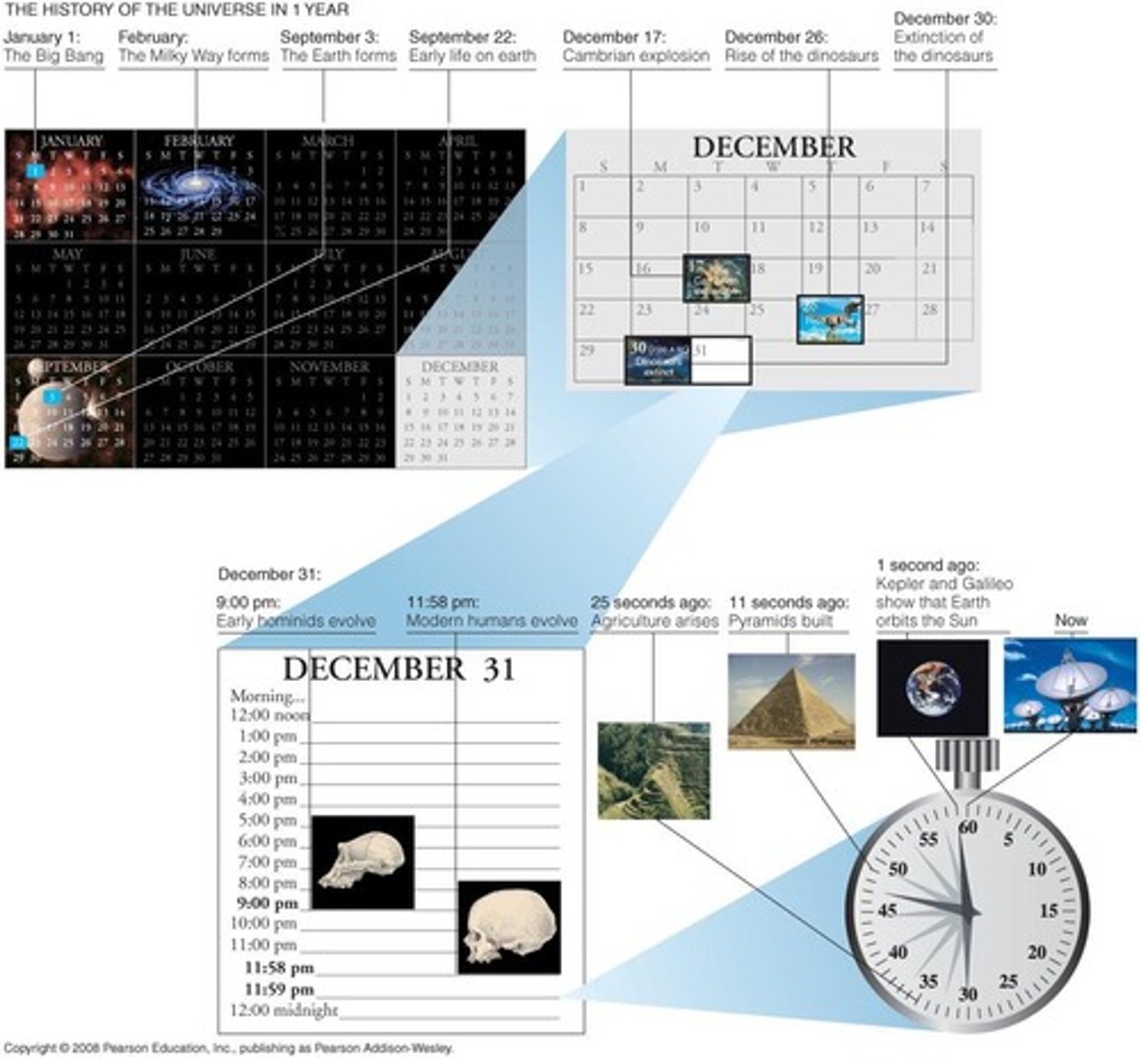
Milky Way Galaxy
A galaxy containing billions of stars.
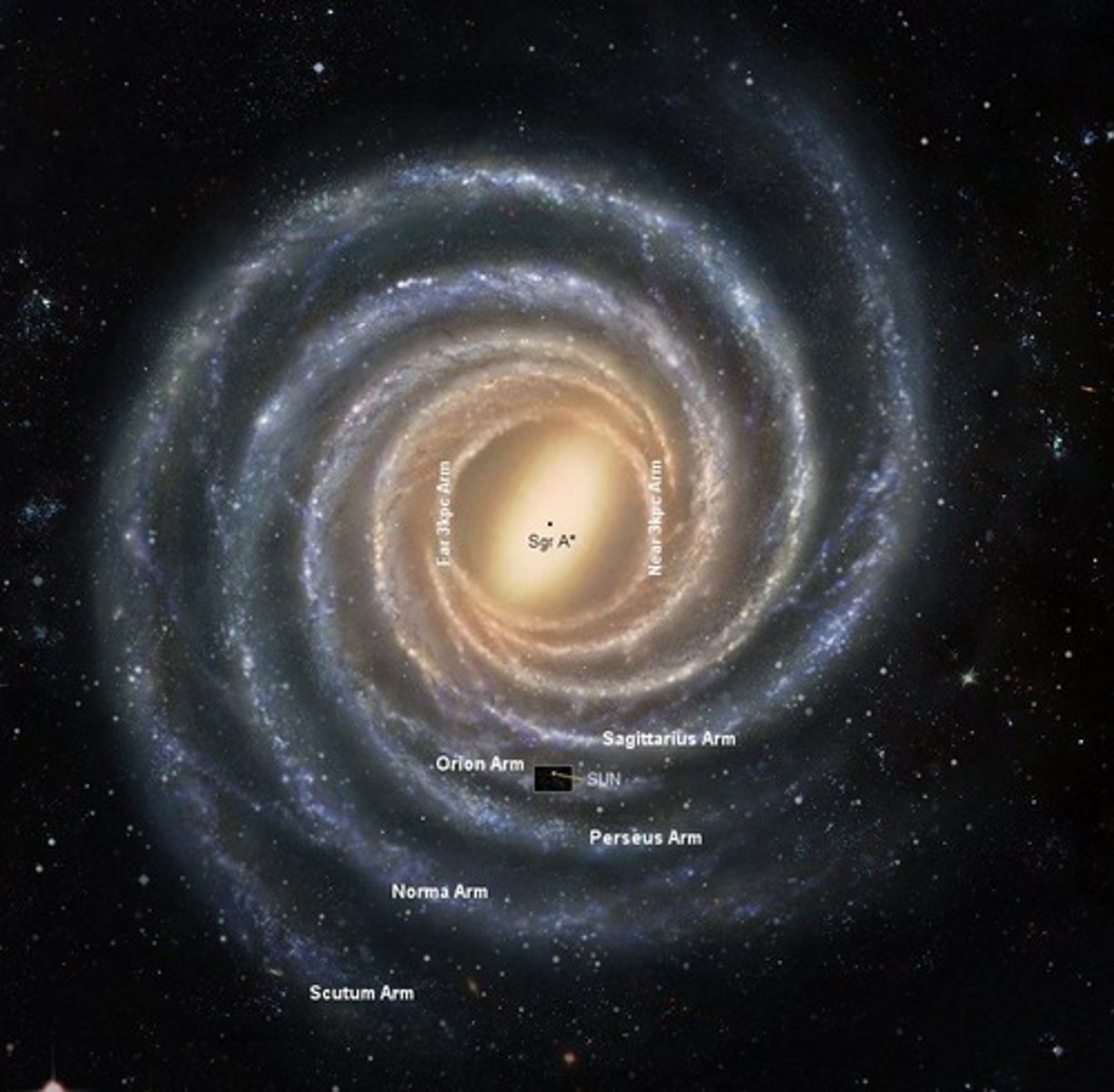
Nebula
Interstellar cloud of gas and dust.
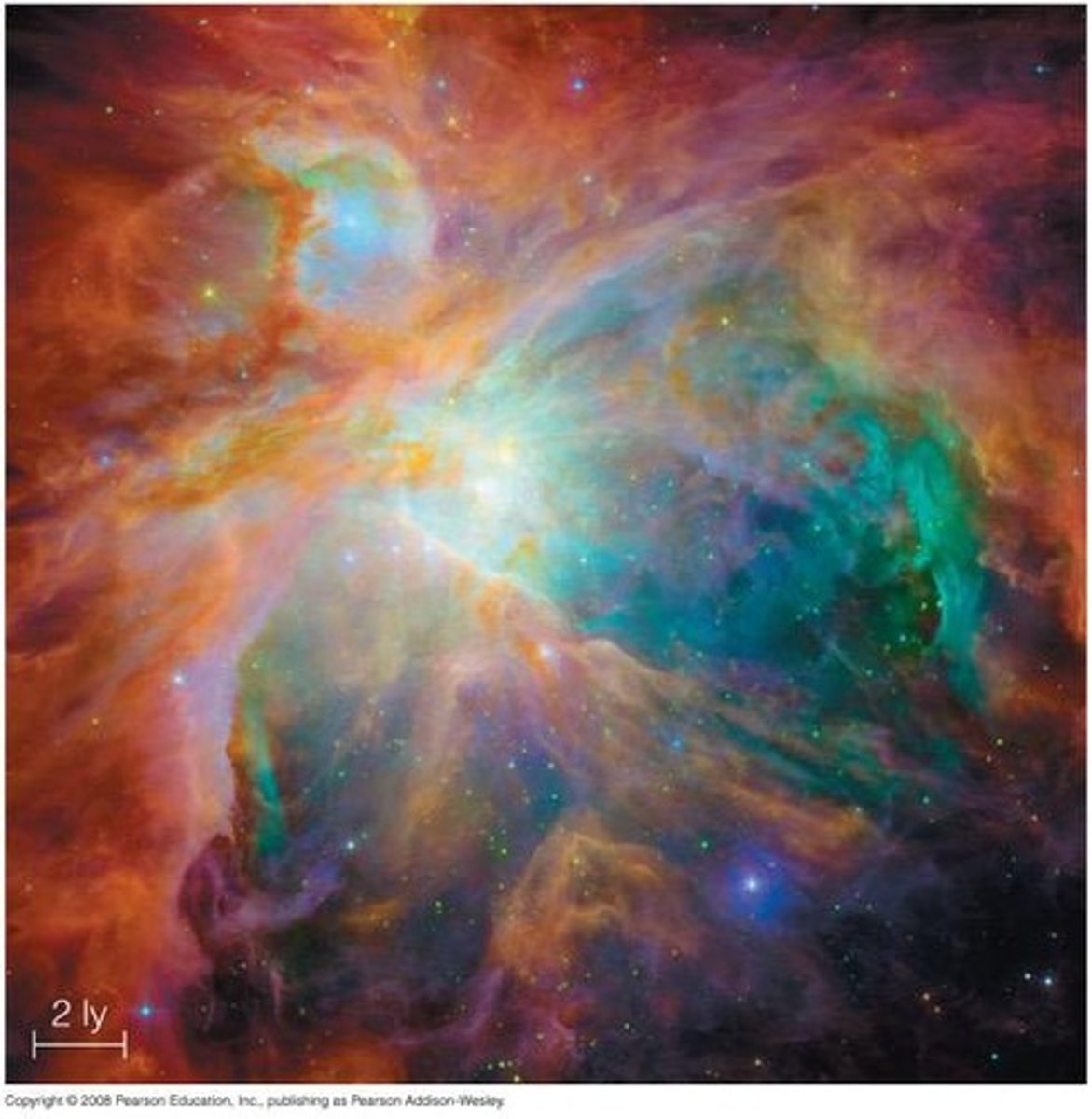
Solar System
Includes a star and its orbiting bodies.
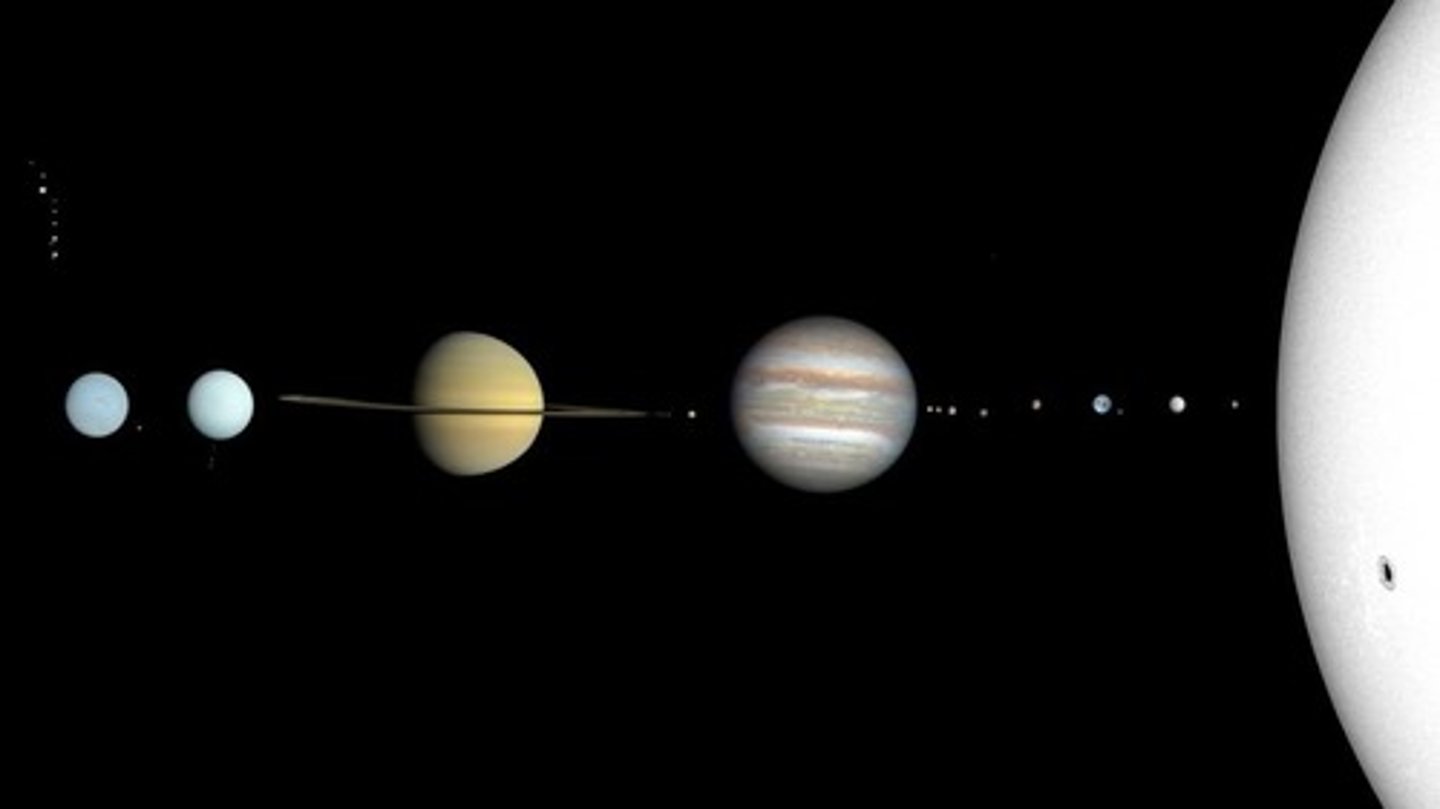
Star
Large gas ball generating heat via fusion.
Planet
Moderately large object orbiting a star.
Dwarf Planet
Small celestial body orbiting a star, not a planet.
Moon
Natural satellite orbiting a planet.
Asteroids
Small rocky objects orbiting the Sun.
Comet
Icy body orbiting a star, often with a tail.
Weightlessness
Condition experienced by astronauts in space.
Total Solar Eclipse
Rare event where the Moon blocks the Sun.
North Star
Brightest star in the northern sky.
Light Year
Distance light travels in one year.
Gravity
Force that attracts objects toward each other.
Nuclear Fusion
Process powering stars, converting hydrogen to helium.
Visible Light
Electromagnetic radiation visible to the human eye.
Ultraviolet Light
Electromagnetic radiation beyond visible light spectrum.
Astronomical Unit (AU)
Average distance from Earth to the Sun.
Galaxies
Massive systems of stars, gas, and dust.
Observational Science
Science based on observing and experimenting.
Eternal Students
Concept of lifelong learning in science.
Curiosity in Science
Encouragement to ask questions and seek answers.
Observable Universe
Contains ~200-100 billion galaxies.
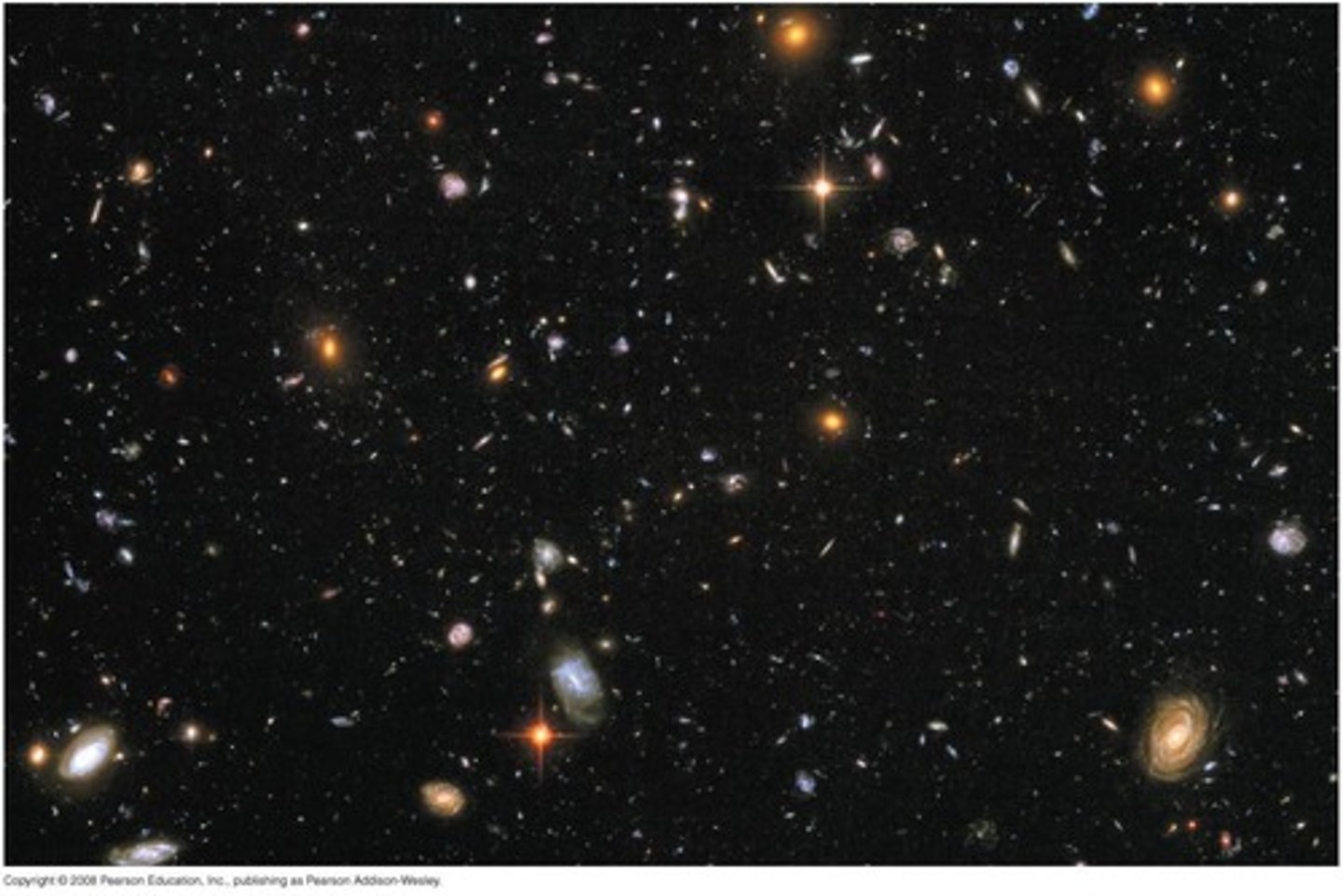
Milky Way Galaxy
One of ~100 billion galaxies.
Stars per Galaxy
About ~400-100 billion stars.
Order of Magnitude
Calculation: 10^11 stars x 10^11 galaxies.
Total Stars
Estimated at 10^22 stars.
Mass Composition
98% hydrogen and helium, 2% other elements.
Astronomical Unit (AU)
Average distance from Earth to Sun.
1 AU
Equals 150 million kilometers.
Light-Year (ly)
Distance light travels in one year.
1 Light-Year
About 9.5 trillion kilometers.
Planetary Distances
Mercury: 0.4 AU, Mars: 1.5 AU.
Sun to Earth
Approximately 8 light minutes.
Earth to Moon
About 1 light second.
Earth to Mars
Ranges from 22 to 3 light minutes.
Sun to Neptune
Approximately 4 light hours.
Nearest Star
Proxima Centauri, 4.2 light years away.
Galactic Movement
Earth orbits Sun once every year.
Earth's Rotation Speed
Rotates at ~1000 km/h.
Solar System Speed
Moves at ~70,000 km/h among stars.
Milky Way Rotation Speed
Rotates at ~800,000 km/h.
Constellation
Region of the sky with defined patterns.
Number of Constellations
88 internationally recognized constellations.
Asterism
Popular star patterns not officially constellations.
Celestial Sphere
Imaginary sphere where stars appear to lie.
Ecliptic
Sun's apparent path through constellations yearly.
Ecliptic
The apparent path of the Sun across the sky.
Zodiac
Twelve constellations the Sun moves through yearly.
Zenith
Point directly overhead an observer.
Nadir
Point directly opposite of the zenith.
Horizon
All points 90° from zenith.
Meridian
Line connecting zenith with N and S horizon.
Altitude-Azimuth System
Coordinate system based on observer's perspective.
Altitude (h)
Angle above the horizon to an object.
Azimuth
Angle from North, moving clockwise.
Angular Measurements
Quantitative angles used in celestial observations.
Full Circle
Total angular measurement of 360°.
Arcminute
1/60 of a degree, ~fingernail thickness.
Arcsecond
1/3600 of a degree, ~hair strand thickness.
Luminosity
Total energy output of a star per second.
Apparent Brightness
Starlight reaching Earth, varies with distance.
Brightness Formula
Brightness = Luminosity / (4π × distance²).
Magnitude Scale
Logarithmic scale for measuring star brightness.
First-Magnitude Stars
Brightest stars in ancient brightness classification.
Sixth-Magnitude Stars
Faintest stars visible to the human eye.
Absolute Magnitude
Intrinsic brightness of a star at standard distance.
Apparent Magnitude (m)
Observed brightness of a star from Earth.
Celestial Sphere
Imaginary sphere where celestial objects appear.
North Celestial Pole
Point in the sky directly above Earth's North Pole.
Circumpolar Stars
Stars that never set, visible year-round.
Celestial Equator
Imaginary line dividing the celestial sphere.
Latitude
Position north or south of the equator.
Longitude
Position east or west of the prime meridian.
Polaris
North Star, located near the North Celestial Pole.
Altitude of Polaris
Equal to observer's latitude in the Northern Hemisphere.
Earth's Axis Tilt
Earth's axis is tilted at 23.5° from vertical.
Precession
Slow circular motion of Earth's rotation axis.
Seasons
Caused by Earth's axial tilt, not distance from Sun.
Summer Solstice
Highest solar path, longest day of the year.
Equinox
Day when day and night are of equal length.
Northern Solstice
Occurs in June, marks summer in Northern Hemisphere.
Southern Solstice
Occurs in December, marks summer in Southern Hemisphere.
Zenith
Point directly above an observer in the sky.
Your Horizon
The line where the sky meets the ground.
Bright Stars
Stars that are prominent near the celestial poles.
Earth's Orbit
Path Earth takes around the Sun, affecting visibility.
Constellations
Patterns of stars that change with seasons.
Time of Year
Affects which constellations are visible at night.
Latitude Example
40° 50' 56" N indicates specific northern position.
Longitude Example
73° 3' 33" W indicates specific western position.
Summer Solstice
Sun is highest in the sky, Northern Hemisphere.
Winter Solstice
Sun is lowest in the sky, Northern Hemisphere.
Vernal Equinox
Sun crosses celestial equator in spring.
Autumnal Equinox
Sun crosses celestial equator in fall.
Tropic of Cancer
Latitude 23.5° N, direct overhead sun in June.
Tropic of Capricorn
Latitude 23.5° S, direct overhead sun in December.
Sun's Altitude
Changes with seasons, affects sunlight intensity.
Analemma
Figure-8 pattern of the Sun's position over time.